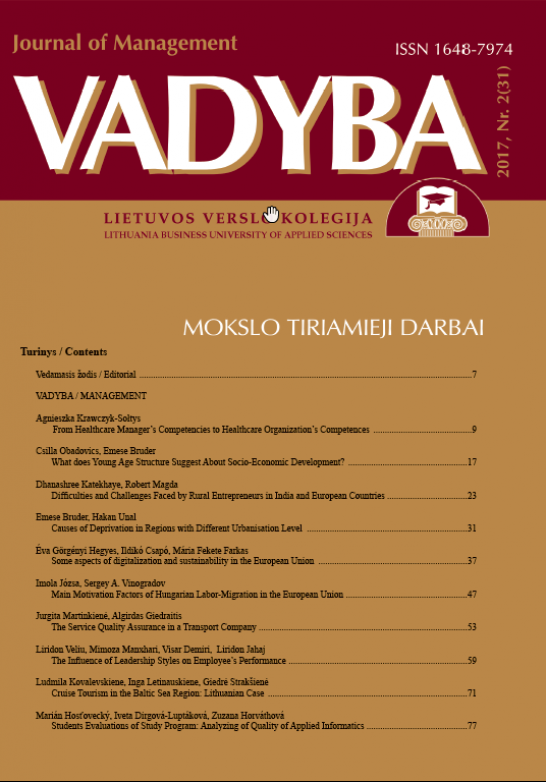THE COMPARISON OF THE LEGAL ENVIRONMENT OF BUSINESS IN LATVIA AND LITHUANIA
THE COMPARISON OF THE LEGAL ENVIRONMENT OF BUSINESS IN LATVIA AND LITHUANIA
Author(s): Renata Šliažienė, Jānis GrasisSubject(s): Business Economy / Management
Published by: Lietuvos verslo kolegija
Keywords: registration of the companies; labour taxation, insolvency of the companies;
Summary/Abstract: Republic of Latvia and Republic of Lithuania are important trade partners within European Union. The authors have tried to do some comparision of the legal environment of the business in the Republic of Latvia and the Republic of Lithuania. Issues of the registration of the companies, comparision of the taxation, insolvency issues as well court proceedings are covered in this article. As there are not some specific academic researches on this issue, the authors overlook normative acts of the two countries. If we compare company laws of two countries, it looks that there are not big differences concerning company registration. Both Latvia and Lithuania implements newest EU directives in the national legislation. From the research we could come to the finding that taxation of labour force is more favourable in Lithuania; it means that companies in Lithuania performs business activities in better conditions. Standart corporate income tax is 15% in Latvia, but starting from January 1st 2018, Latvia will introduce o% rate for reinvested profit; in case profit will be distributed as dividends, the personal income tax will be 20%. Lithuania has one of the smallest corporate income tax in EU for small companies – only 5%, if turnover is not more than 300 000 Euros and it has less than 10 employees. This good practise could be overtaken by Latvia. Legal protection proceedings were introduced in the latest law of the Republic of Latvia on insolvency. Probably the Republic of Lithuania has to introduce legal protection proceedings in the national law on insolvency. One or several methods shall be applied in legal protection proceedings:1) the postponement of the honouring of payment obligations;2) the alienation of movable property or immovable property or encumbrance with rights in rem in order to achieve the extension of the time period for meeting the creditors’ claims, or satisfying of the creditors’ claims;3) the increase of the basic capital of a debtor – capital company (including the investing of the right of the creditor to claim against the debtor in the equity capital);4) reorganisation of a debtor – commercial company;5) other methods which comply with the objective of legal protection proceedings.National court systems are very similar in both countries. National court practise show that most cases cannot be resolved in a single court hearing. Court hearings of a case in a court of first instance may take several months, starting from the date of the registration of the application by the court. Waiting for a final judgment on the average may last up to a few years. Therefor in order to reduce the lengthy proceedings of a legal dispute in the state courts, parties to a commercial agreement may agree to resolve disputes arising from such agreement in a so-called court of arbitration.
Journal: VADYBA
- Issue Year: 31/2017
- Issue No: 2
- Page Range: 151-157
- Page Count: 7
- Language: English

